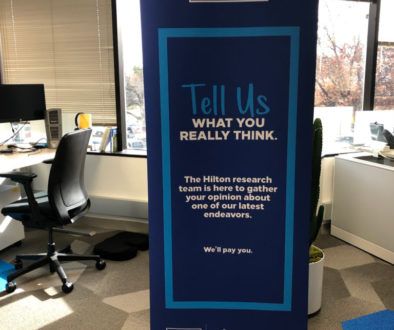Fedora: On Research Design
Research design in anthropology is a tricky thing. It is the part of the process you do before you do anything else, and thus you do before you have any real sense of the situation in which you will be researching and the people with which you will be working. It is the place where you lay down the questions to be answered, setup ways in which you will attempt to answer them, try and anticipate all of the ins and outs of the process as well as all the steps necessary to be taken with all of the stakeholders, which in my case includes my client, my masters committee, and my university IRB.
Then you get into the project and start your research, and only then do you start to realize and understand what you’ve got yourself into and just how many things you didn’t anticipate. So far with this project, being a cyber anthropological based research study (all of the research is being conducted online), my problems have all centered around technology.
My first limitation was understanding the process to get my blog on the Fedora Planet blogroll. With help and some ‘hacking the system’ I got on and while at FUDcon I figured out why it didn’t work in the first place (I wasn’t a part of enough groups!).
Now I am realizing my second limitation, that of requiring a signed piece of paper from all interview participants before each interview can commence. Pen and paper is perhaps one of the oldest forms of communication and technology known to man and yet it is the one thing standing between me an several potential interviews.
This was not a hindrance I anticipated when designing my research study, and it is perhaps not something with which people who are not researching under a university have to deal. However, it is something I now realize is important and am bringing attention to in case there are others embarking on similar research studies with similar IRB limitations that require them to have signed consent forms so they can account for this process in their research design.
Were I to design a similar project in the future under the same IRB limitations, I would ask my IRB to approve an electronic encrypted signature on my consent forms.
Here’s to hoping someone out there can learn from my mistakes!
That all being said, if you have a means for returning a signed document to me electronically and you would like to be interviewed for the Fedora research project, but have yet to contact me please do so soon! All interviews will be wrapped up (as best they can) by Friday!

February 8, 2010 @ 7:05 pm
Several of us hanging out in Raleigh last weekend used xournal (and Paul’s tablet, though I’d signed mine with a normal mouse) to sign the form you posted, and it went smoothly – until something better comes up, this is probably what I’d recommend (speaking as one of those hackers who doesn’t actually own a printer/scanner…)
Steps:
1. yum install xournal (or otherwise install xournal according to your distro).
2. Download the consent form PDF and open it in xournal.
3. Using the pencil tool in xournal, sign the document. (If you need to print your name, there’s also a text tool.)
4. File > Export to PDF.
5. Send the saved and signed PDF back to Diana (or your friendly neighborhood open source researcher).
Does this work?
February 8, 2010 @ 8:17 pm
Also, the explanation of the lead-up involved to doing this sort of research is very helpful to describe – my guess is that many of us are unfamiliar with the intricacies of doing qualitative research on human subjects and the reams of paperwork associated with it, so it helps to know why things may seem to be moving slowly behind the scenes. 😉
February 8, 2010 @ 10:11 pm
Of all the cultural anthro professors I’ve talked to on the subject have told me the same thing, you can submit a research design but you cant be really sure what is going to happen once you get to the field site or if you are going to discover something more interesting and important once you are there. I believe that holds true for even ‘virtual fieldwork’.
In regards to the IRB, I am also looking at an opensource community and have many similar restrictions on how to receive consent. Obtaining a signature in any form is extremely difficult and in my case counter productive to protecting the identity of the informants. I modeled my IRB after Tom Boellstorff’s method described in his Coming to Age book. Basically what I do is refer the person to a publicly electronic copy of the consent form and ask them to read it. Then I ask them if they understand and consent and I record the reply by screenshot.
The IRB committee was probably okay with this because the nature of study is unlikely to produce any sensitive information that will harm the participants
February 9, 2010 @ 10:21 am
@Joshua: I somewhat disagree with “obtaining a signature in any form is extremely difficult”… every Fedora contributor has GPG signed a form, but I guess you won’t be happy with a GPG signature…
I also used Xournal and a tablet… print/sign/scan is too troublesome.
February 9, 2010 @ 10:14 pm
@nico: I wasn’t quite clear on my meaning, obtaining a signature in my research is quite difficult. Of course I would be happy with a GPG signature or a physical one but obtaining signatures is difficult in my case because many of the participants are anonymous anyway and many have very limited technical expertise. Besides it isn’t the signature I’m after, it is the consent.